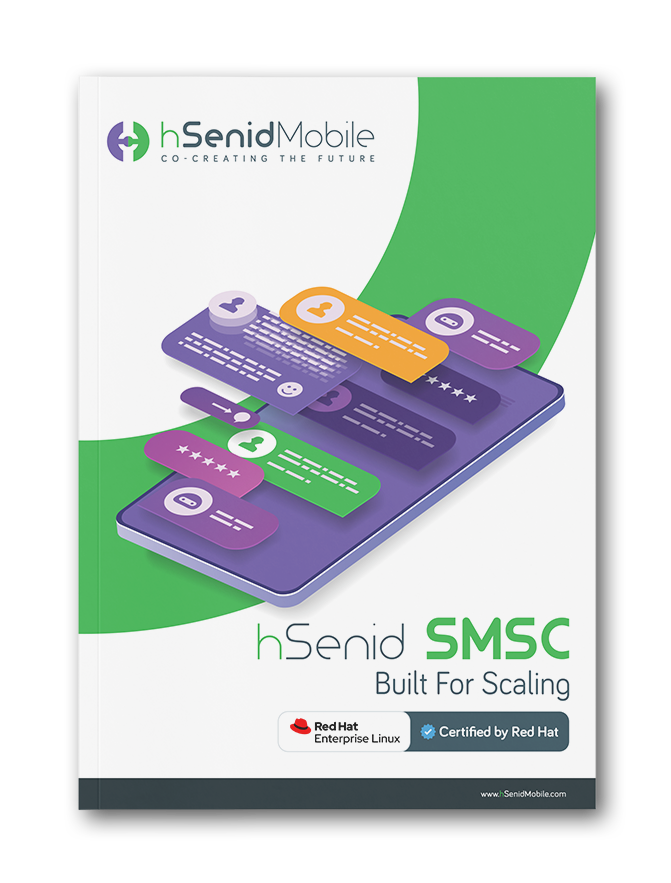In 1992, the world’s first SMS simply said, “Merry Christmas.” It was sent
from a computer to a mobile phone. Fast forward to today, and over 23
billion SMS messages are sent every single day across the globe.
While
messaging apps steal the spotlight, SMS continues to work quietly and
effectively in the background. And behind each of those billions of messages
is a powerful, invisible engine: the SMSC (Short Message Service Centre).
It doesn’t get much attention, but if SMS is the lifeblood of mobile communication, then the SMSC in telecom is the silent force that keeps everything flowing. It’s the reason your bank alerts, appointment reminders, delivery updates, and OTPs show up on time, even if your signal drops or your phone is off.
Imagine sending a text and it going straight to someone’s phone. That’s not how it works. The message first stops at the SMSC operated by your network provider. The service center decides when and how to deliver the message. If the receiver’s phone is off or out of range, the short message service center holds onto it and tries again later. This “store and forward” system is what makes SMS so dependable and what makes the SMSC a core component of any telecom infrastructure.
A modern short message service center must be more than just a message switch. It has to handle high throughput, guarantee uptime, and adapt in real time. Systems must be architected to avoid any single point of failure. That means clustering, internal load balancing, and automated failover are not just nice to have; they’re mandatory. The best short message service center systems aim for near-zero message loss, even during traffic spikes, ensuring that communication never breaks down when it’s needed most.
And there’s more. Scalability is a big factor too. As user bases grow and traffic volumes rise, operators need the flexibility to scale vertically or horizontally depending on their network needs. A scalable, modular SMSC in telecom can grow with the business, reducing the need for expensive replacements and offering better control over costs.
Charging is another major area of focus. Operators serve a mix of prepaid, postpaid, and roaming users, all of whom must be billed accurately and fairly. Real-time and offline charging options are a must, along with flexible Call Detail Record (CDR) generation. Overload protection is equally essential, especially when systems are flooded with traffic. A strong short message service center buffers and processes that traffic without dropping messages or slowing down the network.
And with mobile networks evolving toward 4G and 5G, support for IP-based communication, including IMS interworking and 5G SMSF connectivity, has become a non-negotiable feature. Today’s short message service center needs to be ready for tomorrow’s network requirements.
It doesn’t get much attention, but if SMS is the lifeblood of mobile communication, then the SMSC in telecom is the silent force that keeps everything flowing. It’s the reason your bank alerts, appointment reminders, delivery updates, and OTPs show up on time, even if your signal drops or your phone is off.
Not All Heroes Wear Capes
Let’s face it. When people think of messaging, they think of the usual suspects like WhatsApp or Messenger. But when it comes to critical communication, it’s still SMS that does the heavy lifting. That’s because SMS doesn’t need data. It doesn’t need the latest smartphone. It just works. And the reason it works so well is that the SMSC is managing the show behind the scenes.Imagine sending a text and it going straight to someone’s phone. That’s not how it works. The message first stops at the SMSC operated by your network provider. The service center decides when and how to deliver the message. If the receiver’s phone is off or out of range, the short message service center holds onto it and tries again later. This “store and forward” system is what makes SMS so dependable and what makes the SMSC a core component of any telecom infrastructure.
The Hidden Pressure on Mobile Networks
Mobile networks today carry more messages than ever before. During national holidays, flash sales, or major global events, the number of texts flying across networks can skyrocket. Without a powerful short message service center, operators risk delays, message loss, and ultimately, lost revenue.A modern short message service center must be more than just a message switch. It has to handle high throughput, guarantee uptime, and adapt in real time. Systems must be architected to avoid any single point of failure. That means clustering, internal load balancing, and automated failover are not just nice to have; they’re mandatory. The best short message service center systems aim for near-zero message loss, even during traffic spikes, ensuring that communication never breaks down when it’s needed most.
And there’s more. Scalability is a big factor too. As user bases grow and traffic volumes rise, operators need the flexibility to scale vertically or horizontally depending on their network needs. A scalable, modular SMSC in telecom can grow with the business, reducing the need for expensive replacements and offering better control over costs.
From Message Relay to Intelligent Control
Today’s short message service center platforms go far beyond just routing messages. Operators want control. They need real-time visibility, customizable routing rules, and easy integrations with their existing systems. A good platform provides all of that and more, including tools to define what happens to a message based on where it’s coming from, what type of message it is, or where it’s going. Whether it needs to be stored, rerouted, or analyzed, the short message service center needs to know what to do and do it instantly.Charging is another major area of focus. Operators serve a mix of prepaid, postpaid, and roaming users, all of whom must be billed accurately and fairly. Real-time and offline charging options are a must, along with flexible Call Detail Record (CDR) generation. Overload protection is equally essential, especially when systems are flooded with traffic. A strong short message service center buffers and processes that traffic without dropping messages or slowing down the network.
And with mobile networks evolving toward 4G and 5G, support for IP-based communication, including IMS interworking and 5G SMSF connectivity, has become a non-negotiable feature. Today’s short message service center needs to be ready for tomorrow’s network requirements.








